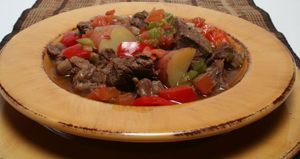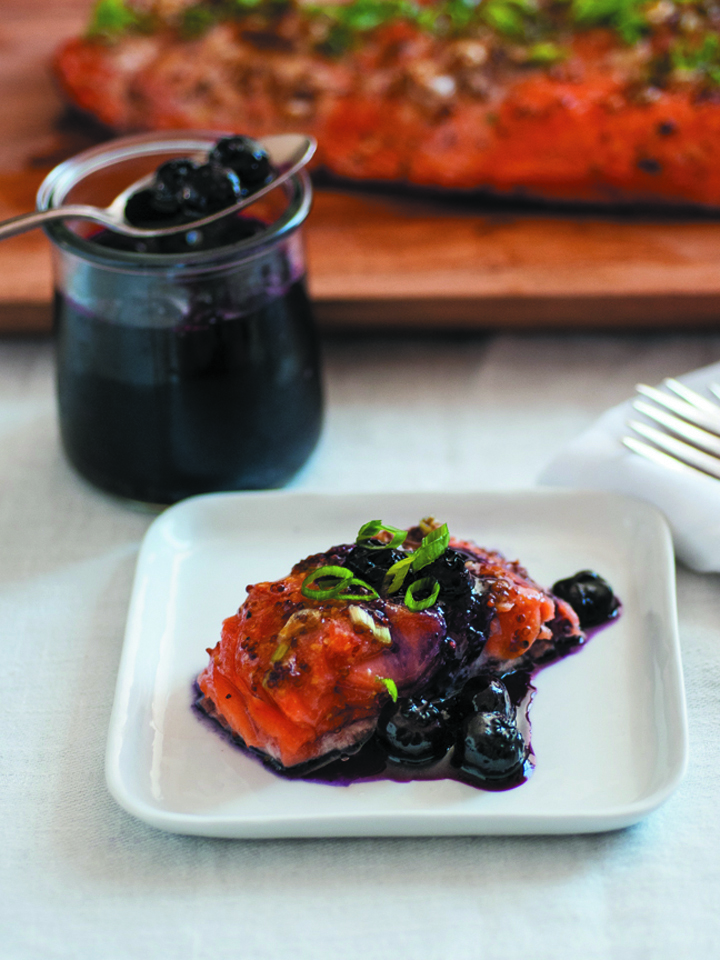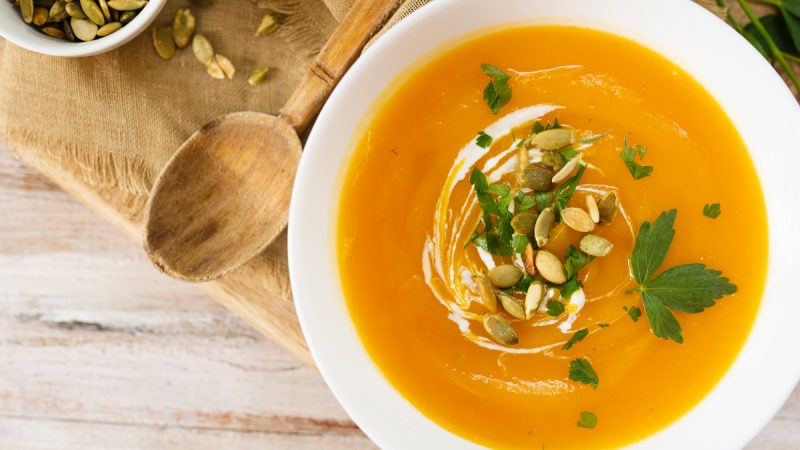A Classic Hungarian Stew

Last week, I walked to the last remaining Hungarian food store in my Manhattan neighborhood to buy my favorite paprika, freshly imported from Hungary. On the way home, I reflected on what it was like when I first moved into this part of the Upper East Side in New York City, and how much living in the neighborhood has influenced my cooking.
Over a hundred years ago, so many Hungarian immigrants settled into this area of Manhattan that it was called Little Hungary. From all over the city, people came to shop at the food stores and eat at the great Hungarian restaurants. My father preferred The Budapest, where the chicken paprikash was so tender the meat fell off the bone into a creamy sauce tinted orange-pink by the paprika. Mopping up the sauce with spaetzle, tiny golden dumplings, was bliss.
When I began living here in 1980, the restaurants were gone but the famous Hungarian food emporiums, including Paprikas Weiss and Lekvar by the Barrel, remained. They were emporiums because they sold poppy seeds, ground nuts, spices and lekvar, thick fruit butters, tart-sweet, made of prune or apricot. They also offered the metal spaetzle makers, pastry tins, hand-painted platters, and even the embroidered table linens used at an authentic Hungarian feast.
The sales clerks loved explaining how to make dishes properly. From them, I learned the difference between the creamy goulash I thought was Hungarian and a genuine gulyás, a soupy stew whose origins go back to the ninth century, when shepherds cooked meat and onions slowly in an iron kettle.
The only proper seasoning for gulyás, I was told, is caraway seeds and paprika. Of course, the paprika should be the sweet or hot Hungarian kind, now sold in many supermarkets. I was also warned to always add some warm water before pouring in the broth, because this keeps the meat from turning hard.
A Classic Hungarian Stew
– Makes 4 servings.
- 1 Tbsp. olive oil
- 2 1/2 cups onion cut in 1-inch dice
- 1 lb. lean stewing meat, such as sirloin, cut in 3/4-inch pieces
- 2 garlic cloves, chopped
- 1 Tbsp. sweet Hungarian paprika
- 3/4 cup warm water
- 1 can (14.25 oz.) fat-free, reduced-sodium beef broth
- 1/2 tsp. caraway seeds
- 3 plum tomatoes, seeded and cut in 3/4-inch pieces
- 1 medium green bell pepper, seeded and cut in 1-inch pieces
- 1 medium red bell pepper, seeded and cut in 1-inch pieces
- 1/2 lb. small yellow-fleshed or red-skinned new potatoes, unpeeled, quartered
- Salt and freshly ground black pepper
- 4 Tbsp. reduced-fat sour cream, for garnish (optional) inch pieces
Directions:
Heat the oil in a large pot or deep skillet over medium-high heat. Sauté the onion until it is translucent, about 5 minutes. Add the meat and cook, turning the pieces until no longer red on the outside. Mix in the garlic and paprika. Cook until fragrant, 1 minute.
Stir in the warm water, scraping the pan to dislodge any food stuck at the bottom. Add the broth and caraway seeds. Bring the mixture to a boil, reduce the heat, cover and simmer gently until the meat is tender, 40 minutes to 1 hour.
Add the tomatoes, green and red peppers and the potatoes. Cook until the potatoes are tender, about 20 minutes. Season to taste with salt and pepper.
If not serving immediately, store, covered, in the refrigerator and reheat before serving. If desired, garnish each serving with a tablespoon of sour cream.
Per serving: 288 calories, 8 g. total fat (2 g. saturated fat), 27 g. carbohydrate, 4 g. protein, 4 g. dietary fiber, 247 mg. sodium.
The Author:
“Something Different” is written for the American Institute for Cancer Research (AICR) by Dana Jacobi, author of The Joy of Soy and recipe creator for AICR’s Stopping Cancer Before It Starts.








